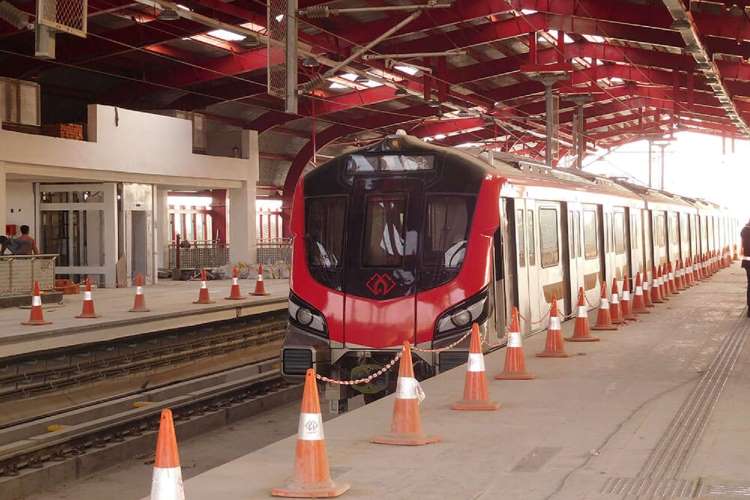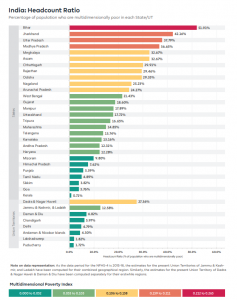
The Uttar Pradesh government is preparing a roadmap to make the state a $1 trillion economy in five years. It is an onerous task as UP is a laggard among Indian states in terms of economic development and social indicators. The Uttar Pradesh economy has a size of Rs 20.48 trillion ($260 billion) at present which means it will need to grow about four times in the next five years to become a $1 trillion economy.
The state has a population of over 19 crore which is nearly the population of entire western Europe. It is an agricultural state with a geographical spread of 243,246 sq km. Wheat, barley, pulses, sugarcane, potato and lentils are the main crops grown in the state. Agro processing and tourism are the most important industrial sectors. Uttar Pradesh has an urban population of 4,44,95,063 with Noida contributing 10% of the state GDP.
Uttar Pradesh has 4 crore households and the state has to ensure livelihoods and an acceptable quality of life. The challenge for the state administration is to improve both physical and social infrastructure, create job opportunities, and bring prosperity to rural areas to control migration to towns within and outside the state. The recent NITI Aayog report on multidimensional poverty has put the state at the bottom of the list with 51% of the population facing poverty. The state ranks low on other human development indices also because of hunger and malnutrition issues. The need, therefore, is to target the benefit of government schemes to needy households.
READ I Demographic dividend: Can India benefit from its young population
An agenda for Uttar Pradesh economy
Fast-tracking of the Uttar Pradesh economy will accelerate the economic and social development of the country. The UP government needs to focus on putting systems in place to achieve Sustainable Development Goals (SDGs) and to ensure that no one is left behind in benefiting from economic growth. Right policies, good execution and strict monitoring are the key. It is quite doable if done with a systemic approach.
The first step is to analyze the current situation dispassionately. UP gets maximum funds from the 15th Finance Commission as allocation is based on population. This, along with State Finance Commission and MGNREGA funds, can help develop infrastructure in panchayats and municipal bodies. The need is to list and monitor the deliverables in terms of concrete roads with proper drainage and sewage, pipelines, toilets, public buildings, road access, and internet access.


The most important step is to ensure financial inclusion with a financial institution (bank/post office/RRB/Cooperative Bank/PACS) within 5km radius from any location. As funds are available, the need is to focus on deliverables and monitor them.
The next focus area for the Uttar Pradesh economy is livelihood opportunities through better skilling. The state should have a manufacturing facility in every 10 panchayats. Skilling has to be specific and should lead to sustainable employment. The state will need at least two crore sustainable quality jobs to ensure that at least one member of the four crore households has a well-paying job.
READ I Multidimensional Poverty: Niti Aayog report points to need for course correction
UP needs an all-out skilling effort
There is a need to develop skills as per the requirements of the food processing industry that can absorb a large number of people. The other UP industrial sectors that need skilled youth are handicrafts and construction. There should be wide-ranging land reforms to ensure the safety and security of people and crops. Dairying and care of abandoned cows are avenues to be developed under cooperatives or corporates to attract investments. Another aspect is social protection to improve the HDI (Human Development Index) score and reduce the burden of healthcare, ensuring a healthy and productive population.
UP and Bihar have been at the bottom of the list of developed states in the past 27 years. Now, there is an effort to address the shortcomings by these states. Several bottlenecks lead to perpetually poor HDI scores despite major efforts supported by funds. The need is to have a system-based approach to have real-time and time-series data. Common household database where all individuals and households have their entitlements and eligibility worked out is required, to ensure targeted delivery of services without slippages, pilferage and impact.
Real time data enables course correction. This has been effectively done in Madhya Pradesh by adopting SAMAGRA, which is now being implemented in 8 more states. UP could also implement this system based on NIC software. The delivery of pension, scholarships, housing, skilling, sanitation, drinking water, care of differently abled, and job profiles are easy to analyse and monitor. The claims of success will be real then, having positive impact on households with inclusive growth and better lifestyles.
An Uttar Pradesh economy with improved parameters in GDP, Employment and HDI will be major contributor to the India growth story and will be an enabler to inclusiveness and well being. India’s ambitions to become a global economic powerhouse cannot be achieved without the economies of UP and other north Indian states firing on all cylinders.
Dr Aruna Sharma is a New Delhi-based development economist. She is a 1982-batch Indian Administrative Service officer. She retired as steel secretary in 2018.

